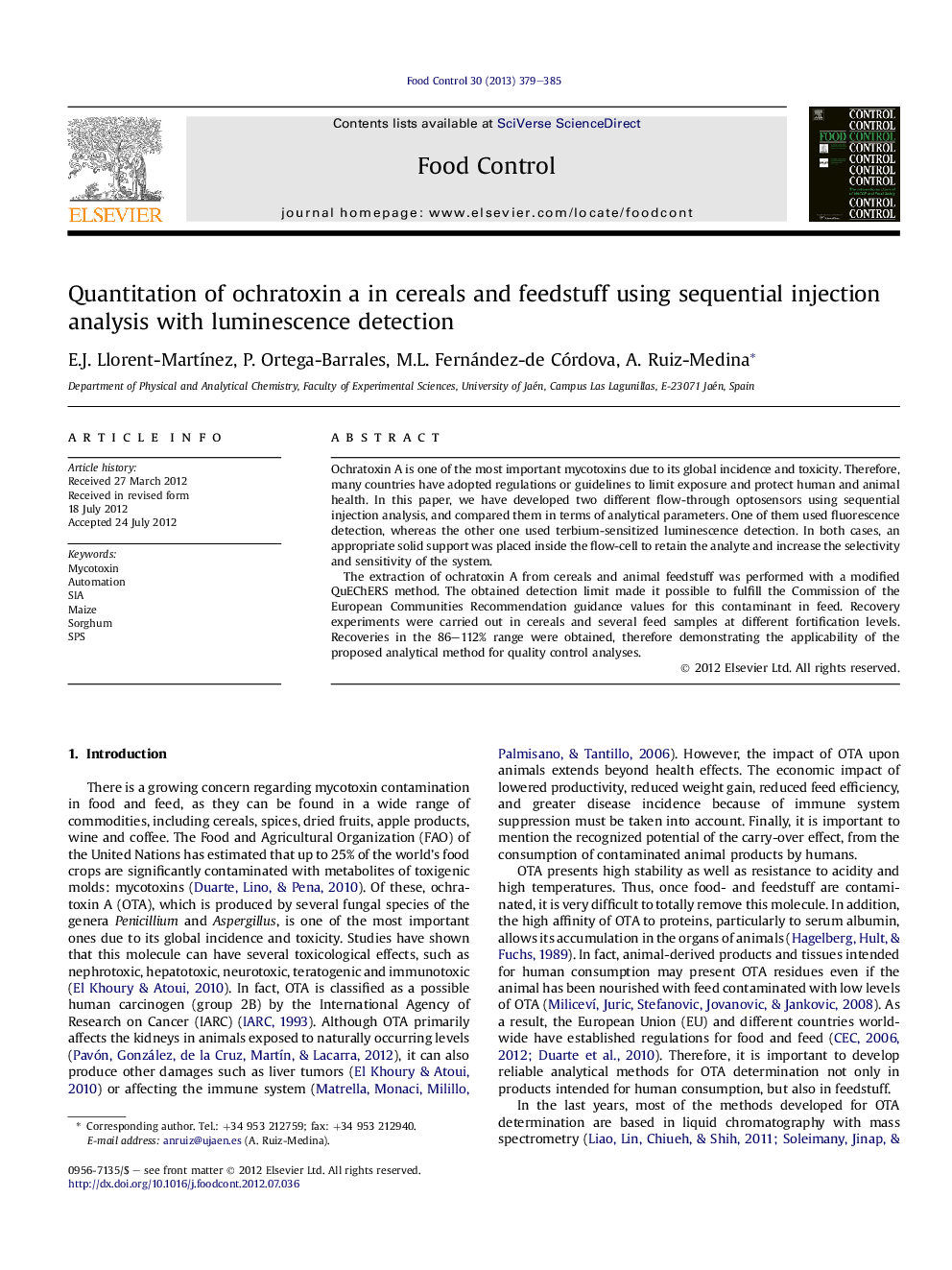| Article ID | Journal | Published Year | Pages | File Type |
|---|---|---|---|---|
| 4559438 | Food Control | 2013 | 7 Pages |
Ochratoxin A is one of the most important mycotoxins due to its global incidence and toxicity. Therefore, many countries have adopted regulations or guidelines to limit exposure and protect human and animal health. In this paper, we have developed two different flow-through optosensors using sequential injection analysis, and compared them in terms of analytical parameters. One of them used fluorescence detection, whereas the other one used terbium-sensitized luminescence detection. In both cases, an appropriate solid support was placed inside the flow-cell to retain the analyte and increase the selectivity and sensitivity of the system.The extraction of ochratoxin A from cereals and animal feedstuff was performed with a modified QuEChERS method. The obtained detection limit made it possible to fulfill the Commission of the European Communities Recommendation guidance values for this contaminant in feed. Recovery experiments were carried out in cereals and several feed samples at different fortification levels. Recoveries in the 86–112% range were obtained, therefore demonstrating the applicability of the proposed analytical method for quality control analyses.
► A flow-through optosensor for the determination of ochratoxin A is proposed for first time. ► Fluorescence and terbium-sensitized luminescence are compared as detection techniques. ► The method is applied to the determination of ochratoxin A in cereals and feedstuff. ► The results show that this method could be used as an interesting alternative to chromatography.
